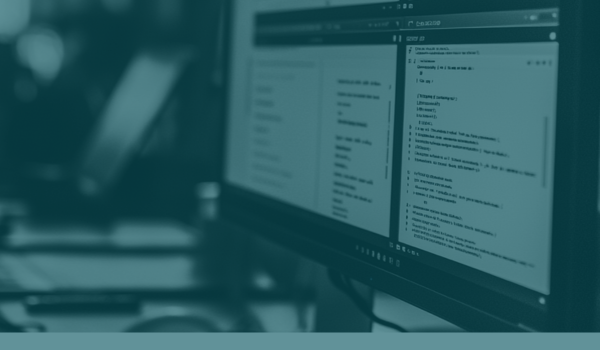For modern SaaS organizations, security isn't a destination, it's a journey. Planning this journey is very much like sailing, you plan your route, strategy for handling different weather conditions, and allocate roles and responsibilities to crew members. While achieving SOC 2 compliance may be the initial peak, navigating the ever-changing security landscape requires a sturdy vessel - and DevOps pipelines are the perfect fit. This article charts a course for continuous SOC 2 compliance, seamlessly integrated into your development workflow.
Hoisting the SOC 2 Flag
First things first, let's clarify the waters. SOC 2 compliance demonstrates your commitment to data security and privacy, a crucial trust signal for customers, especially in the enterprise realm. It focuses on five Trust Service Criteria (TSC): Security, Availability, Processing Integrity, Confidentiality, and Privacy. Two types of audits - Type 1 and Type 2 - verify your systems and processes adhere to these principles.
Setting Sail: Understanding Continuous Compliance
Think of compliance like a lighthouse guiding your voyage. But instead of a static beam, imagine a dynamic network of beacons, constantly adapting to shifting currents. Continuous compliance embraces this fluidity, weaving security checks into your DevOps pipelines. No more scrambling last-minute - every code commit, every infrastructure change, automatically undergoes a mini-audit, ensuring smooth progress towards your annual SOC 2 expedition.
Anchoring Your Security with DevOps
Now, let's equip your DevOps ship with the right tools and practices:
- Shift Left Security: Integrate security considerations into the earliest stages of development, leveraging tools like static code analysis and vulnerability scanners.
- Automated Testing: Continuously test your code and infrastructure for potential security breaches and compliance gaps. Think of it as casting out a sonar net, constantly probing for vulnerabilities.
- Infrastructure as Code: Treat your infrastructure like code, managing it through version control and automation. This transparency simplifies audits and ensures consistency.
- DevOps Collaboration: Break down silos! Security, dev, and ops teams need to work in sync, sharing knowledge and leveraging each other's expertise. Communication is key for smooth sailing.
Charting the Continuous Compliance Course
Continuous compliance isn't just about tools, it's about a proactive mindset. Here's how to navigate the waters like a seasoned captain:
- Regular Risk Assessments: Don't wait for storms to hit. Proactively identify and address potential risks by conducting regular assessments, keeping your security sails taut.
- Policy Optimization: Keep your policies and procedures dynamic, adapting them to evolving threats and industry best practices. Think of them as a navigational chart, constantly being updated with new discoveries.
- Employee Training: Your crew is your greatest asset. Invest in regular security awareness training for all employees, ensuring everyone shares the responsibility of a secure voyage.
Reaching Your SOC 2 Horizon
By integrating these practices into your DevOps pipelines, you'll arrive at your annual SOC 2 audit well-prepared. Continuous compliance isn't just about checking boxes; it's about building a security culture that permeates your entire organization. Additionally, SOC2 requires you to prove that you are adequately complying and need to show proof of this.
Beyond the Horizon - Maintain and Automate DevOps Compliance
Remember, the journey doesn't end at the audit. Maintain momentum by:
- Monitoring and Review: Regularly monitor your systems and policies, proactively identifying areas for improvement. Keep your compass pointed towards continuous advancement.
- Automation is King: Automate as many compliance tasks as possible, freeing up your crew to focus on navigating new territory. Let technology handle the mundane, while you explore the possibilities.
- Embrace Improvement: View compliance not as a burden, but as an opportunity to refine your security posture. Every audit is a chance to strengthen your vessel and sail even farther.
Rigging up your DevOps pipelines for Continuous Compliance
Ensuring all necessary equipment is functional and onboard when it comes to your pipelines is difficult and should change and improve as your journey continues. But there are safety checks you can start with before the journey begins by integrating them into your build pipelines. Here is a list of essential and easy-to-do security checks and practices:
- Check for passwords: Simple enough but often a fundamental tragedy if they are exposed. Developers do hardcode passwords in code. Often, when they are testing code, it can be forgotten. Check to see if password patterns exist in code that is checked into git. The passwords may be fairly safe in your private repositories but sometimes these become public or just exposed from a developers local environment.
- Create short lived passwords: When working with Cloud environments like AWS, IAM keys are often found through out the code. Reduce the risk of exposure by creating temporary keys. So even if they are exposed, the exposure is short lived. We use Elmer to reduce our risk.
- Mitigate data hacks: Your data, including your code is always at risk. With new ways of hacking your data coming up constantly, you need to ensure you have a copy of your data somewhere else, disconnected from everything. When it comes to AWS, we create a new account, one that is not within your organization structure, and the account details held in hardcopy accessible only by the executives. Once you have done this, create the pipelines that copy the data often; with versioning established; Our approach is Data Bunker.
- Validate your code and Infrastructure against standards: Check your code and infrastructure against standards like OWASP 10. All these checks can be performed in automated pipelines, both at build time and chaotically. Scan your containers, validate all libraries used and check known vulnerabilities when they are raised by vulnerability checkers and scanners.
- Validate your Generative AI safeguards are in place: Ensure that your deployments are not overriding your safeguards. The process for this is simple but the risk is super high. If any of your safeguards are missing during deployments, stop the build, report it and fix it.
- Wash your data for test and dev: Never, ever copy data straight from production to dev or test. Your customers are the reason why you are serious about compliance and protecting their privacy should be your highest priority. Washing data is straightforward and you can create a repeatable process to do this via a pipeline. Our pipelines use Washery. With Washery, you can ensure that the process is always repeatable
- Only deploy if your compliance tests pass: Nothing should ever be released to test or production without passing your compliance tests. Your pipelines are the driver for this. Automating them ensures you can enforce this. When you manually deploy, your risks are super high and you most likely won't get a compliance certificate.
- Monitor what is monitoring your systems: There is nothing worse than finding out your monitoring is, well, not monitoring. It happens more often than you think. The easiest way to check to see if your systems are getting monitored correctly is to constantly monitor the systems that are monitoring. We use Guardian to do this.
- Report everything: Even failures should be reported. As part of your deployment pipelines and ongoing compliance check pipelines, generate a standard report that is shared with everyone accountable for your organizations success. Compliance is just not possible if those accountable are not across failures and successes.
Of course there are many more things we do, and many more you should do. The above should get you started and get you prepared for your journey.
Throughout this article, we've explored various strategies for integrating continuous compliance into your DevOps pipelines. For a tangible example of how these principles can be put into action, explore base2Services' journey in 'How base2Services Slashes the Compliance Burden'. This article demonstrates how we reduce administrative tasks, proving the power of continuous compliance.
Achieving and maintaining SOC 2 compliance through DevOps pipelines isn't just about adhering to regulations; it's about building a culture of security and trust. By integrating these practices, SaaS organizations can confidently navigate the ever-changing security landscape, ensuring a smooth and prosperous voyage for their businesses. So, raise the sails, embrace the continuous cruise, and let your commitment to security guide you towards a brighter, more secure future.





